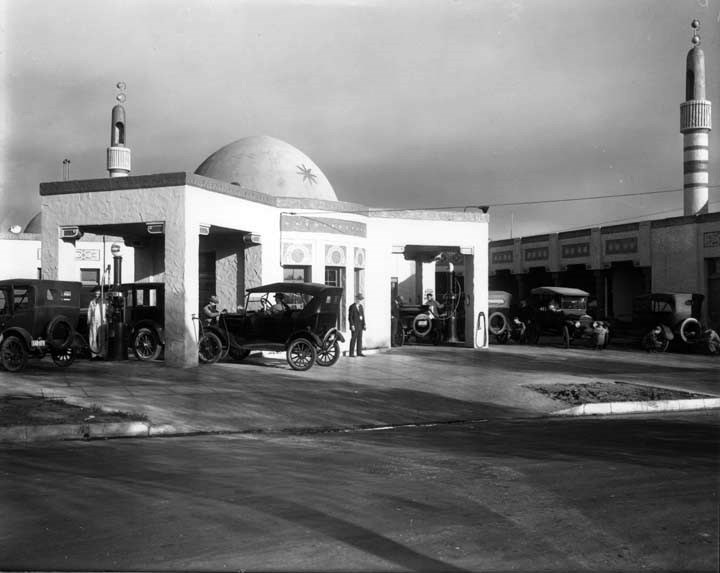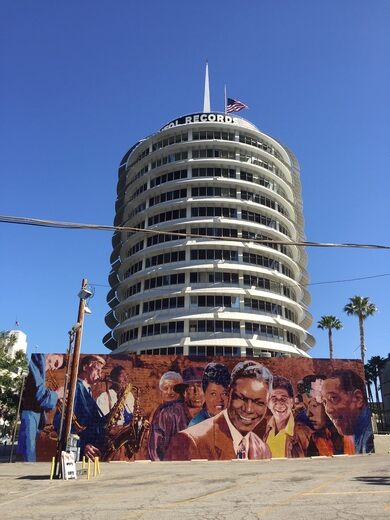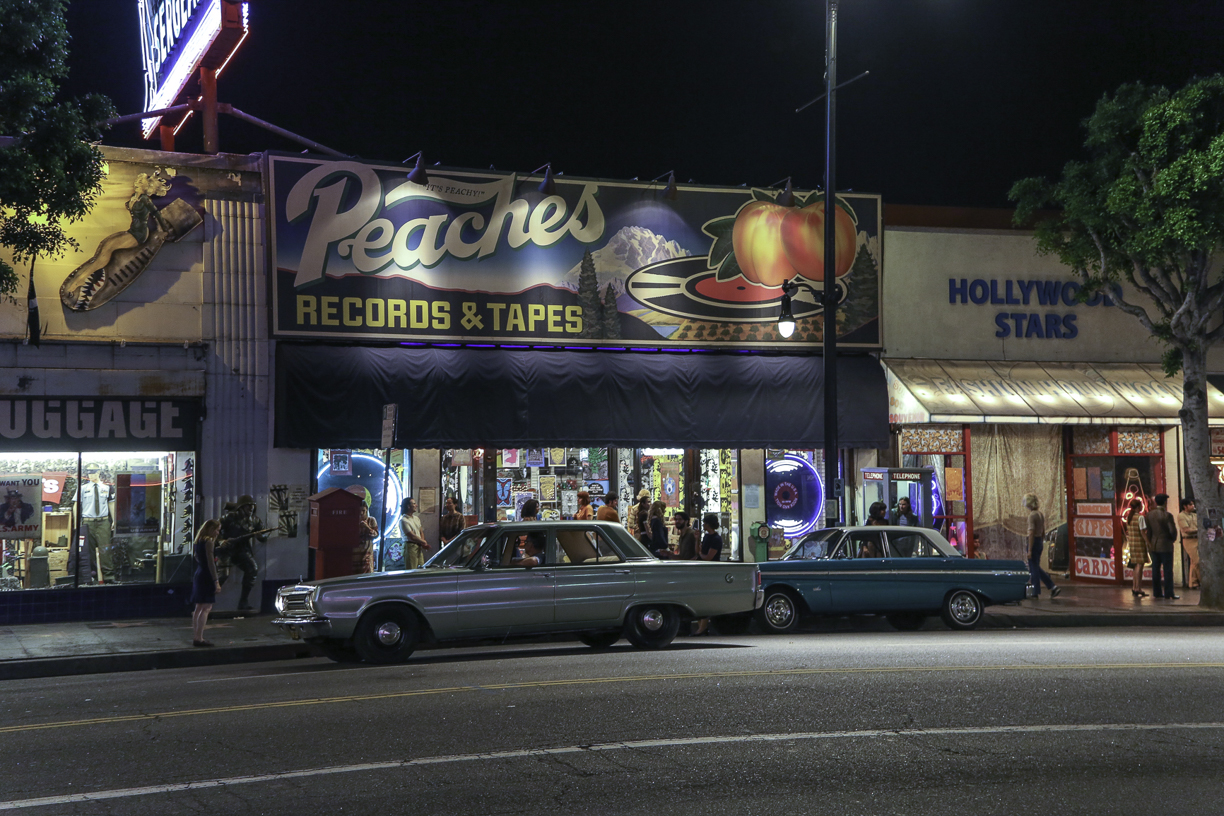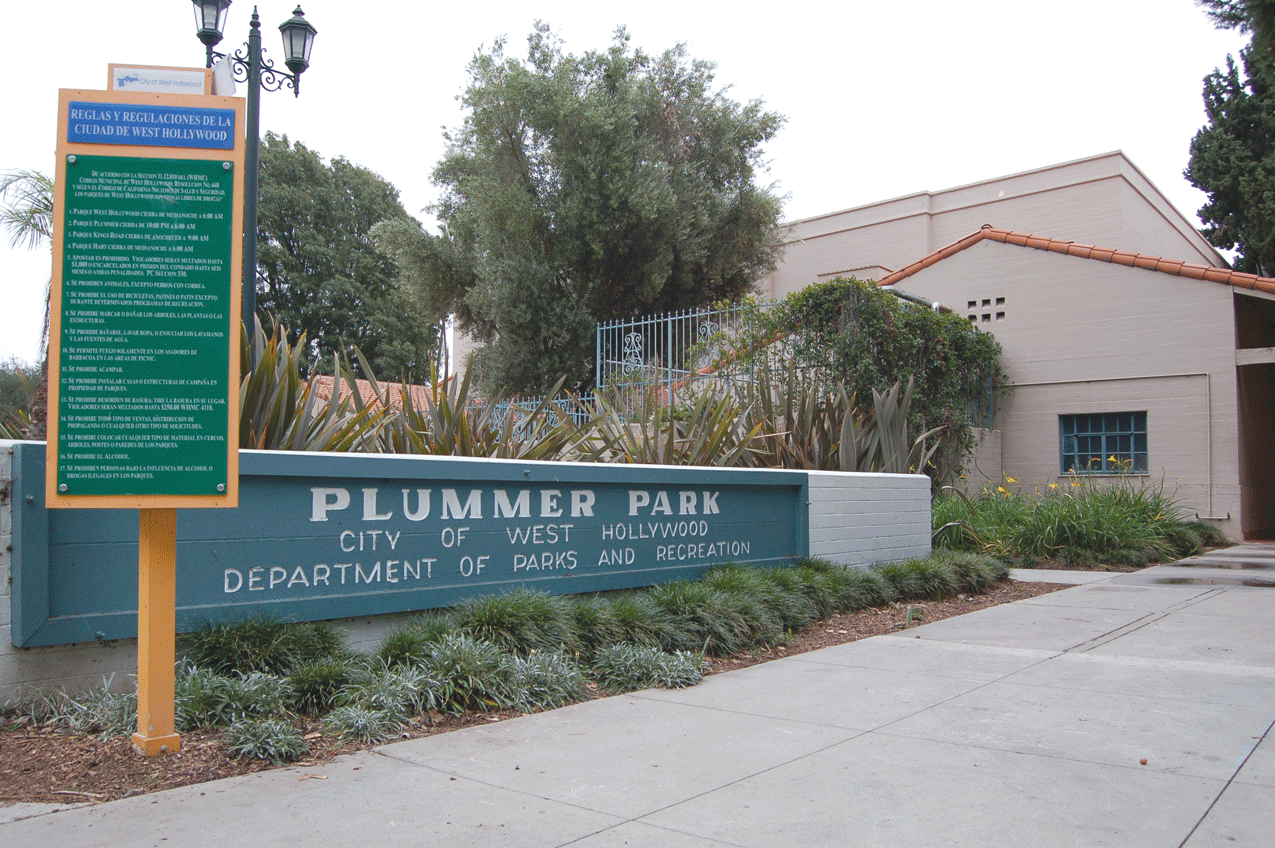Click for larger map!
The fourth of six CicLAvias in 2019 and the 32nd iteration of Los Angeles' showcase open streets event takes place this Sunday, 8/18. Though unfortunately not in the San Fernando Valley, as the date would otherwise dictate, but on the other side of The Hill, with a 6-mile course linking the ethnically diverse East Hollywood with the star-studded central Hollywood and the prideful and design-conscious West Hollywood. Dubbed by CicLAvia's organizers as "Meet The Hollywoods" (Can they try to find better names of events without using the word "meet" or "meets"? The Militant is willing to help them out in that department - seriously -- email him), The organizers challenge CicLAvians to re-discover neighborhoods they may or may not already know. The Militant, too, wants people to re-discover the communities along every CicLAvia route: There have been 31 unique routes during the entire history of CicLAvia so far (the first two events had the same course), and The Militant Angeleno has tirelessly [takes, long deep breath] taken time out of his militant and extramilitant life to share with you his intimate knowledge of secret and unique points of interest.
If you're familiar with The Militant's Epic CicLAvia Tour guides, you'll know that a lot of the points of interest are connected with another in some way, and this one is no exception. Our CicLAvia tour begins in a triangle formed by local streets, and as you will see, you'll see that pattern repeats itself all the way to the opposite end of the route!
So here goes the CicLAvia guide for this Sunday. As always, see you or not see you on the streets!
Hollywood Blvd, Vermont Ave & Prospect Ave, East Hollywood
A year after the town of Hollywood voted to be annexed by Los Angeles in 1910, the Pacific Electric Railway extended its tracks from Sunset Boulevard to Hollywood Blvd. This triangular space, formed by Hollywood, Vermont and Prospect Avenue (the former moniker of Hollywood Blvd that retains its name eastward of the triangle), became a popular Red Car stop until service here ended in 1954. It maintained its use as a transportation facility, becoming not only a bus stop, but also a taxi layover zone. It became a de facto green space up until the early 21st century, where it turned into a popular locale for homeless encampments, despite the city's efforts to landscape it into a beautified public space.
4800 Hollywood Blvd, East Hollywood
The former residence of oil heiress, proto-feminist, patron of the arts and cultural influencer Aline Barnsdall (pronounced "barns-doll," not "barns-dale"), it was built in 1921 and designed by none other than Frank Lloyd MF'ing Wright. Named after Barnsdall's favorite flower (which forms a design motif around the building), it was borne from much bickering and head-clashing between the architect and client due to the home not being built to her tastes and cost overruns. In 1926 she up and left, sort of, donating the house and most of the property sitting on Olive Hill to the City of Los Angeles for artistic and recreational purposes. Although, she did live in a now-demolished residence on the west side of the park for the last two decades of her life. Last month, Hollyhock House was designated as a UNESCO World Heritage Site - the first such in Los Angeles.
4982 Hollywood Blvd, East Hollywood
This unassuming L-shaped shopping center on Hollywood and Alexandria sports a pair of towering minarets on top of its roof. Was it a mosque at one time? Was this home of an Islamic community in the past? Actually, no. they're the last vestiges of Calmos Auto Service Center, a gas station built in 1923 that became part of Union Oil's 76 chain. Its architecture reflects the whole Arab/Egyptian aesthetic fetish/appropriation thing back in the '20s, a decade which was marked by the 1921 Rudolph Valentino film, "The Sheik" and the 1922 discovery of King Tut's tomb. As seen in the historic 1924 photo, the dome of the "mosque" was a now-demolished structure that housed the area for the gas pumps.
1969
1615 N. Alexandria Ave., Little Armenia
This K-12 Armenian private school, affiliated with the St. Garabed Armenian Apostolic Church across the street, is one of the biggest cultural anchors in Little Armenia. Named after its founders, not only is it the alma mater of 3/4ths of the rock band System Of A Down, but its relatively-new library building was designed to resemble Noah's Ark, as it was believed the ark landed in Mt. Ararat, the highest mountain in ancient Armenia and an iconic cultural landmark for the country. The school will be celebrating its 50th anniversary this week on Tuesday, August 20.
1992
5321 Hollywood Blvd, Thai Town
Just to the right of the driveway of the Thailand Plaza shopping center, across from the Buddha shrine, is one of the most tucked-away curiosities in the Hollywood area. Known by the uninitiated as a "doll house," this miniature Siam-style abode serves as a cultural function to the nearby Silom market and the former Thai restaurant on the premises: Known as a "spirit house," it is built away from a business to ward away evil or mischievous spirits by leading them to an alternate location (plus water/fruit offerings) so their bad juju doesn't affect you.
6. Thai Town Gateway Statues
2007
5448 Hollywood Blvd, Thai Town
This pair of bronze statues on pedestals towering over Hollywood Boulevard function as the gateway of Thai Town. First installed in 2007 and the subject of The Militant's first ever blog post, it depicts a figure known as an apsonsi, a half-angel, half-lion creature from Thai mythology, chosen for its attributes as a protector. The statues were made in Thailand and flown from Bangkok, which, like Los Angeles, is also known as "The City of Angels."
Another pair of statues were installed near Normandie Avenue in 2012.
7. Mayer Building
1928
5504 Hollywood Blvd, East Hollywood
This four-story, Art Deco edifice, also known as the Hollywood Western Building, was designed by S. Charles Lee, who also happened to design many a structure featured in The Militant's Epic CicLAvia Tour guides. Named after its developer Louis B. Mayer (as in Metro Goldwyn Mayer) it served as the first home of the Motion Picture Academy of America (a.k.a. The Ratings People) and Central Casting. More recently, it serves as the local field office of U.S. Congressman Adam Schiff. Be on the look out for one of them trolley wire support rings, still embedded into the side of the building!
8. Hollywood Pantages Theatre
1930
Hollywood Blvd, Hollywood
Opened in 1930, this was actually the second theatre in Los Angeles bearing the Pantages name (the first one, still standing on 7th and Hill streets, opened a decade earlier and was renamed the Warner Theatre in 1929). This was also the last theater built bearing the name of vaudeville promoter Alexander Pantages, who ran a chain of 84 theaters across North America back in the day. The iconic Art Deco venue designed by B. Marcus Priteca (who also drew up the DTLA Pantages, as well as other theaters) actually functioned as a cinema for most of its history until 1977 when it ran the Broadway musical Bubbling Brown Sugar and the rest is Jazz Hands history. But did you know that the building constructed nearly 90 years ago is actually incomplete? It was originally supposed to stand 12 stories tall with offices. There have been recent proposals to complete the structure.
9. Hollywood Brown Derby Site/Metro Bike Hub
1929-1985/2017
1628 N. Vine St, Hollywood
Did you know that Metro's Hollywood Bike Hub facility, which opened in 2017, stands on the very site of the Hollywood Brown Derby restaurant? This was the second location of the legendary local restaurant chain, which began on Wilshire Boulevard. Back in the Hollywood Heyday of the first half of the 20th century, it was like the lunch and dining hotspot for famous film stars and industry moguls. But perhaps the biggest star associated with the Hollywood Brown Derby was the Cobb Salad, invented here circa 1937. Named after Brown Derby co-owner Robert Cobb, it was an improvised mish-mash of leftover salad ingredients, either made for theater mogul Sid Grauman or by Cobb himself as a late-night meal (depending on which version of the legend). The restaurant closed down in 1985 and the iconic Mediterranean-style structure was burned in a fire two years later. It was finally demolished in the mid-1990s after the Northridge Earthquake.
10. Capitol Records Building/Hollywood Jazz Mural
1956
1750 N. Vine St, Hollywood
You may or may not already know that the Capitol Records building is: a) The world's first circular office building (designed by Louis Naidorf of Welton Becket associates -- the same architectural firm that designed the Dorothy Chandler Pavilion; b) Designed like a stack of records; and c) The FAA warning light atop its spire spells "HOLLYWOOD" in Morse Code. What you probably didn't know was that Capitol Records, founded in 1942, was the first major record label headquartered in the West Coast, and that the building was largely financed by the profits made from its premier artist at the time, Nat King Cole. Also, this is one of two skyscrapers in Los Angeles with a spire, the second being the Wilshire Grand Center. And speaking of Nat King Cole, Capitol's classic crooner is depicted front and center in the 88 foot-wide mural facing the building's south parking lot, "Hollywood Jazz, 1948-1972" by African American muralist (and Lynwood native) Richard Wyatt, Jr. painted in 1990 and restored in 2011. If you're into the Walk of Fame stars, all four members of The Beatles, as well as Tejana singer Selena, have their pavement honors in front of the building.
11. 'Once Upon A Time in Hollywood' Filming Locations
2018
Hollywood Blvd between Vine Street and Cherokee Avenue
Location scenes from the 2019 Quentin Tarantino film, "Once Upon A Time In Hollywood" were filmed in summer and winter 2018 on The Boulevard between Vine Street and Cherokee Avenue, which itself became an actor, dressed in late-1960s period signs, ads and aesthetic. The 1923 Guaranty Building on 6331 Hollywood Blvd (now the L.Ron Hubbard Museum) got a retro-look as a Bank of America branch. And up Ivar Street, Joseph's Cafe (1775 Ivar) stood in for the iconic West Hollywood nightclub Pandora's Box.
12. Janes House (Oldest House in Hollywood)
1903
6541 Hollywood Blvd, Hollywood
At the far end of this collection of restaurants and bars stands the oldest extant house in Hollywood -- a Queen Anne/Dutch Colonial Revival abode built in 1903 developed by none other than H.J. Whitley himself (as in the dude who founded Hollywood in 1886). It was owned by members of the Janes family from Illinois for some 80 years and also functioned as a small private school (attended by the children of celebrities) until the mid-1920s. In 1985, the house was moved several yards north to its current location and the Hollywood-facing part of the property was developed. Today it functions as a 1920s-themed speakeasy bar called No Vacancy at Hotel Juniper.
13. Grauman's Egyptian Theatre
1922
6706 Hollywood Blvd, Hollywood
Built in 1922 by cinema mogul Sid Grauman, this was his first venue in Hollywood after opening the Million Dollar Theatre in Downtown Los Angeles. Designed by the team of Gabriel Meyer and Philip Holler (who also designed The Egyptian's younger and more famous sister down the street, The Grauman's Chinese Theatre), it was inspired by the popular "Egypt-mania" sweeping the world following the 1922 discovery of King Tut's tomb. From the 1970s to the 1990s it ran under the Mann Theatres chain (The Militant saw "Return of the Jedi" here during opening weekend in 1983), and was sold to American Cinematheque in 1996, re-opening two years later after a major renovation. It may or may not be purchased by Netflix.
14. Hollywood High School
1903
1521 N. Highland Ave, Hollywood
Originally founded in 1903 as a two-room school a few blocks north above a Masonic Lodge the same year the town of Hollywood was in incorporated, the campus moved to its current location a year later. In the 1920s, its mascot, The Sheik, was named after the hit 1921 Rudolph Valentino movie of the same name. Since then it has boasted a large number of famous alumni, such as Los Angeles Times publisher Norman Chandler (Class of 1917), actress Carole Lombard (1923), "Looney Tunes" animator Chuck Jones (1930), actress Lana Turner (1936), "People's Court" judge Joseph Wapner (1937), actor Mickey Rooney (1938), actress Judy Garland (1940), Secretary of State Warren Christopher (1940), actor James Garner (1944), actress/comedian Carol Burnett (1951), actor/singer Ricky Nelson (1958), actor John Ritter (1966), actor Laurence Fishburne (1980), actress Sarah Jessica Parker (1983) and R&B singer Brandy (1996). A large mural outside the school's auditorium depicts famous alums as well as other celebrities.
15. Highland Avenue
1900
Highland Avenue, Hollywood
Highland Avenue was not named after the Scottish Highlands, nor any other geography or topography, but in memory of a local woman named Highland Price. Her best friend and neighbor, Mary Penman Moll, who lived where the Hollywood Roosevelt Hotel now stands, donated a strip of property to be built as a road. She named it in memory of Price, who passed away at the time and was the first person interred at Hollywood (now Hollywood Forever) Cemetery in 1900. The street became an important north-south thoroughfare, especially one connecting directly with the San Fernando Valley via the Cahuenga Pass. From 1911 to 1952, it carried the Pacific Electric Railway lines between Los Angeles and the SFV.
 |
1925
7156 Santa Monica Blvd, West Hollywood
This iconic restaurant, bar and Hollywood hangout (just across the street from the Samuel Goldwyn Studio) opened in 1925 by former boxer Jimmy Bernstein, who used an old Pacific Electric Red Car. The adjoining building was built in 1939. In the 1940s, Hong Kong-born chef Lem Quon was hired to cook at the Formosa and later became Bernstein's business partner, taking over ownership after his death in 1976. Quon died in 1993, with family members taking over ownership afterward. Threatened with demolition several times, the Formosa persevered. It was featured in the 1990s movies "L.A. Confidential" and "Swingers." In the 2010s decade, after various remodeling and re-remodeling, it was purchased by the 1933 Group in 2017 and re-opened this year with the Red Car (#913, in full view on Formosa Avenue) re-painted and the establishment restored to its Golden Era charm.
17. Crescent Heights Triangle/Quint Cutoff
1900
Santa Monica Blvd & Crescent Heights Blvd, West Hollywood
Have you ever wondered why there's a "triangle" at the corner of Santa Monica and Crescent Heights boulevards? It's a remaining vestige of a half-mile railroad line known as the Quint Cutoff built in 1900 connecting a rock quarry west of Laurel Canyon with the railroad tracks along Santa Monica Boulevard. The "triangle" section is known in railroad terms as a "wye," which enables a locomotive to reverse direction without the use of a turntable. Another "wye" was built at the opposite end of the line where it meets Sunset Boulevard. The Pacific Electric Railway briefly took over this railroad line in 1911 until it was dismantled shortly after that year, but the alignment of the "wye" tracks on both ends were built into the modern street grid.
18. Plummer Park
1937
7377 Santa Monica Blvd, West Hollywood
In 1874, Anglo-Mexican couple Capt. John and Maria Cecila Plummer purchased a ranch formerly part of Rancho La Brea (bounded by present-day Santa Monica Blvd, La Brea Ave, Fountain Ave & Gardner St) to raise their sons Juan and Eugenio and grow vegetables to sell to residents of nearby Los Angeles. The Plummers were good friends with the Leonis family, who had a ranch of their own way over the hill in present-day Calabasas. After John and Maria died, the ranch was divided and plots sold off, with Los Angeles County purchasing a large portion in 1937 to use as a public park, with new facilities being built as part of FDR's Works Progress Administration projects. Eugenio lived in the 1877 family house until his death in 1943. The Plummer House was the oldest house in Hollywood until it was moved in 1983 to the grounds of the Leonis Adobe in Calabasas, whereby the 1903 Janes House (See #12) took the crown as the oldest Hollywood home.
19. Sal Guarriello Veterans' Memorial
2003
Santa Monica Blvd & Holloway Dr
Salvatore "Sal" Guarriello was an Italian American WeHo resident who was best known as serving on the West Hollywood City Council from 1990 to 2009, and served as mayor four times during that tenure. During World War II, he served in the U.S. Army as a combat medic in Italy and established the West Hollywood Veterans' Memorial in Holloway Park in 2003. After his death in 2009, the City of West Hollywood re-dedicated their civic veterans' monument as the Sal Guarriello Veterans' Memorial in honor of its most respected veteran and civic official.
20. Site of La Cienega Lanes/Flippers Roller Boogie Palace
1946-1981
8491 Santa Monica Blvd, West Hollywood
What stands as a CVS Pharmacy with a concave facade was a popular youth recreational venue for various generations. In 1946, TV host Art Linkletter established Art Linkletter's La Cienega Lanes bowling alley, becoming a popular place to roll strikes during the golden era of bowling in the post-World War II era. From 1979 to 1981, the alley became Flippers Roller Boogie Palace, a popular roller skating rink and music venue during the influential post-disco new wave/punk era of Los Angeles. Local bands like The Plimsouls, Berlin and the Go-Gos, as well as up-and-coming popular acts like The Talking Heads and Prince performed there. In 1984, the building became the Esprit clothing flagship store.
21. Site of Pacific Electric Sherman Yard/Pacific Design Center
1896-1954; 1975
West Hollywood was originally known as Sherman, named after Moses Hazeltine Sherman, land developer and railroad executive (Yes, the SFV's Sherman Way and Hazeltine Ave were named after him) who co-founded the Los Angeles Pacific Railway, linking Santa Monica with Los Angeles. The area on the former Rancho La Brea land that sat midway between the two cities was chosen as the site of a railroad yard, and a settlement named after Sherman developed around it. In 1925, the town on unincorporated Los Angeles County land chose to re-name itself "West Hollywood" to closer associate with Tinseltown. Because it was on County land, and thus patrolled by the Sheriff's Department, it began to attract gay and lesbian residents during the Prohibition Era due to the Los Angeles Police Department's frequent raids of gay and lesbian establishments in Los Angeles city (whereas the Sheriff's Department was much more tolerant). The Los Angeles Pacific Railway became part of the Pacific Electric Railway starting in 1911, and the yard became the main facility for its Western District, until the last Red Car in the area rolled in 1954. Southern Pacific freight trains took over the tracks on Santa Monica Boulevard, though not as frequently, and in 1974, the yard was demolished to make room for the sprawling Pacific Design Center, which opened the year later. The PDC was designed by Argentinian architect Cesar Pelli, who passed away one month ago.
22. Norma Triangle
Santa Monica Blvd/Doheny Dr/Sunset Bl-Holloway Dr, West Hollywood
Our CicLAvia tour begins with one triangle, and ends with another: The right-triangle formed by Doheny Drive, Sunset Boulevard/Holloway Drive and Santa Monica Boulevard features one of West Hollywood's biggest residential and commercial districts. Norma Triangle was named not after actress Norma Talmadge, but after the wife or child of a Los Angeles Pacific Railroad executive during the area's days as Sherman, as many streets were named at the time. Featuring the famed Sunset Strip on its north side, and the LGBT-oriented "Boys Town" nightclub district on the south, the area also includes the former residence and studio of architect Lloyd Wright (son of Hollyhock House designer (See #2) Frank Lloyd MF'ing Wright, and who also assisted designing Barnsdall residence himself - see how things tie together on these CicLAvia guides?) on 858 N. Doheny Drive.
Happy CicLAvia on Sunday! Don't forget to share this guide with a friend!


.jpg?itok=OWwF-UIX)


















Always enjoy your guides; well done.
ReplyDeleteThanks MA! You're the best...always taking your time to do these educational/informative guides!! - Elisa
ReplyDeleteThanks for your guide, it's super helpful for the event + general info and inspiration to investigate these areas of interest on our own too.
ReplyDeleteThis guide is spectacular! One thing: Google Maps shows Buu Dien as permanently closed! No! Did they move or are they gone forever?
ReplyDeleteExcellent goods from you, man. I have keep in mind your stuff prior to and you are just extremely fantastic. best commercial stuffs
ReplyDeleteWe like your tour because it gives us great basic information about the event as well as motivation to further explore these locations on our own. Animated logo design services
ReplyDelete